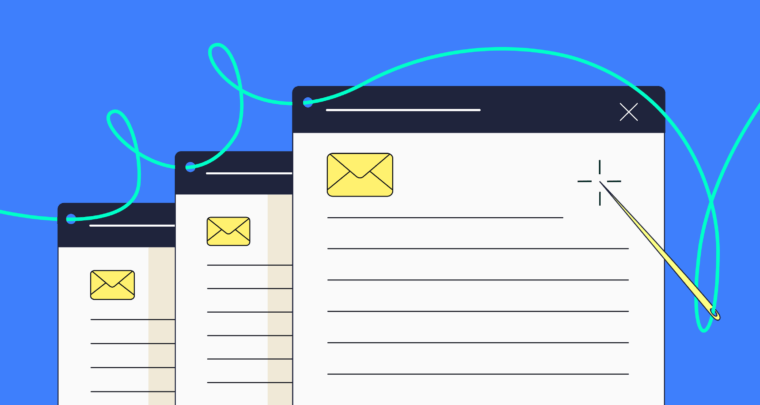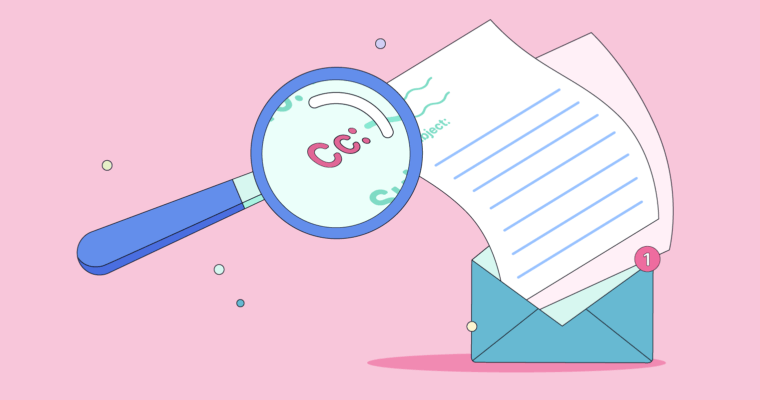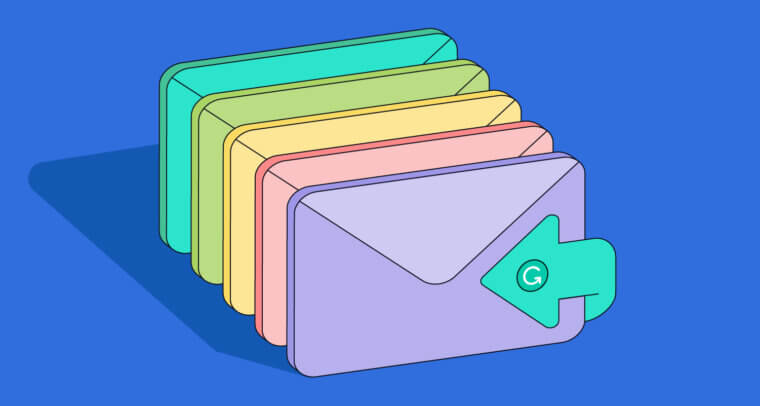
- Emails should always end with a sign-off that consists of a suitable farewell or closing phrase, your signature, and your contact information.
- Make sure you use an appropriate sign-off based on your relationship with the recipient, whether in a professional or informal setting.
- You should avoid certain email sign-offs to help make a good impression on the recipient.
You wrote a great email. It has a solid opening line, a clear email message, and a call to action that’s sure to get the response you’re looking for. Before you click “Send,” there’s just one last thing to do: Write an effective email sign-off.
The proper ending to your email can provide a sense of closure to your message, ensuring that the recipient clearly understands your main points and any next steps. It can also leave a lasting impression, reinforcing your professional image or the tone of your relationship with the recipient.
Here are some guidelines for how to end an email, with examples of some of the best sign-offs to use and some to avoid.
Table of Contents
What should every email sign-off include?
How to end an email professionally or formally
How to end an email informally
What is an email sign-off?
An email sign-off is the final section of an email. It generally comprises a word or short phrase followed by your name or signature and contact information. An email sign-off goes directly after the email’s closing line and signals the message is complete.
Email sign-offs are used in just about every kind of email. They’re a crucial part of correspondence, and because of this, using an appropriate email sign-off aligns with good email etiquette.
What should every email sign-off include?
Every email sign-off should include:
A farewell
The farewell is the first part of an email sign-off. It’s the word or phrase used right before the sender’s name, such as best regards, sincerely, talk soon, or cheers (more examples to come later). It’s an integral part of the email’s tone and can impact how the reader interprets it.
A signature
The next component, the signature, is the sender’s name. You don’t need to type your name after an email’s farewell if you have a professional email signature. An email signature is a personalized block of content you can set to be automatically included in every email you send or just to specific audiences, such as people outside your organization. It typically contains your full name, job title, phone number, and extension. It may also include your office address, LinkedIn profile, and additional content, like an inspirational quote or headshot.
Contact information
If you don’t have an email signature, be sure to include any relevant contact information after your name, such as your phone number or social media handles, so the recipient can reach you in other ways.
How to end an email professionally or formally
Every professional email needs an appropriate sign-off. When deciding on your approach, consider your relationship with the recipient and whether your industry or company has a more formal culture.
Use a formal closing if you’re contacting someone you haven’t met, someone in a position of authority, someone outside your organization, or prospective or current clients. A more formal approach is also ideal for emails sent with job applications and cover letters. Here are some examples of professional email sign-offs:
1 Sincerely
This traditional sign-off is popular because it ends an email on a positive yet formal note.
2 Regards
This, and its variations of warm regards, kind regards, and best regards, sends a clear, positive message without straying from professional communication guidelines.
3 Best
Giving your best to the recipient is simple, straightforward, and fits almost any email.
4 Thank you
When you’re making a request or saying “thank you” for a favor, endorsement, referral, or opportunity, you can reflect this in your email sign-off.
5 I appreciate your [help, input, feedback, hard work, etc.]
Similar to the previous entry, this sign-off clearly expresses your gratitude to the recipient for a specific project or task. In a follow-up or reminder email, this can also be a helpful strategy for ensuring a response.
6 I’m looking forward to starting this project with you
Best used when you’re about to begin a collaborative project or task with the recipient, this sign-off helps strike a cooperative and optimistic tone for the upcoming venture.
How to end an email informally
A more informal email sign-off is sometimes suitable for recipients with whom you have an existing relationship. You can also use these sign-offs professionally when emailing colleagues you know well or conducting less formal business. Here are some examples of informal email sign-offs:
1 Cheers
Conveying goodwill in a relaxed tone, cheers is a conversational, friendly way to end an email.
2 Take care
This sign-off communicates that you and the recipient have a warm relationship but isn’t over-the-top.
3 Best wishes
A bit more personal than the previous entries, this sign-off makes it clear that you wish the recipient well. It’s also appropriate for workplace goodbyes, such as when a coworker is retiring or leaving.
4 Talk soon
If you’re planning to talk to your recipient soon, feel free to let them know.
5 Catch you later
Similar to talk soon, this sign-off acknowledges that you’ll engage with your recipient again shortly.
6 Have a great day/Have a great weekend
If you wish to convey a friendly, approachable tone, these phrases are perfect for emails sent on a Friday or before a holiday. They add a personal touch and express your well-wishes for their time outside work.
10 email sign-offs to avoid
Some sign-offs might leave the wrong impression. Here are a few you should avoid:
1 Thanks in advance
This sign-off can come across as presumptuous because it implies a demand that the recipient write back.
2 Yours truly
You don’t truly belong to the recipient, which can make yours truly seem insincere or forced.
3 —[Name] or —[Initial]
Unless you’re sending a very brief, informal email, omitting the sign-off can come across as brusk or careless.
4 Love (or a variation, like XOXO)
This sign-off is too personal unless you’re emailing your significant other or a close family member.
5 Emoji (👍👋🙂✌️)
While some emoji are acceptable in business communication, it’s better to leave them out of your sign-off, which is meant for more formal and less ambiguous communication.
6 Respectfully yours
In contrast to the previous entry, this sign-off is considered very formal, to the point of feeling stiff or aloof.
7 Have a blessed day
It’s generally best to avoid any religious overtones in professional and casual emails.
8 Have a good one
This is another example of an overly informal sign-off that is better said in person than over email.
9 Hope that makes sense
This sign-off can also be considered passive-aggressive, as it implies that any misunderstanding is on the recipient’s part rather than due to your communication skills.
10 Good luck
This sign-off can leave too much up to interpretation—does it imply the recipient needs luck, a task is too difficult, etc.?
An inappropriate sign-off is just one kind of email mistake that can detract from your message. Failing to include a sign-off is another misstep to avoid.
Email sign-off FAQs
What should every sign-off include?
Every email sign-off should include:
- A farewell
- The sender’s name or signature
- The sender’s contact information
What are some good ways to end an email professionally?
- Sincerely
- Regards
- Best
- Thank you
What are some good ways to end an email informally?
- Cheers
- Take care
- Talk soon
- Have a great day






